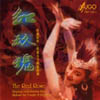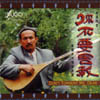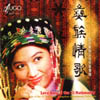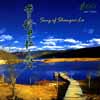| Artikel |
Bestellnr. |
Titel, Künstler |
|
 |
HRP7169-2 *
EAN: 4-892440-716926
EUR 15,49
Xingjiang Ethnic
|
The Red Rose
Aijieum, The Red Rose, Song of the Herdsman, Tazak from Qebiyat Mukam, Yearning towards My
Lover, Paxiru from Wuzihale Mukam, Kuerle Sanam, First Dastana from Lake Mukam and others
Mukam Art Troupe of Xinjiang. 73 minutes.
|
|
 |
HRP7170-2 *
EAN: 4-892440-717022
EUR 15,49
Xingjiang Ethnic
|
Don't Torment Me, Dear
Love for Homeland, Charming Mairemu, Don't Torment Me, Dear, The Scenic Kashgar, Ode to
the Spring, Sarahbar from Lake Mukam, Alamuhan, Yearning for Love, Mayila and others
Mukam Art Troupe of Xingjiang. 69 minutes.
|
|
 |
HRP7178-2
EAN: 4-892440-717824
EUR 12,99
Liangshan Ethnic
|
Love Song of the Yi Nationality
Custom of Leibo, The Joyful Herdsman , Buckwheat Dance, Fascinating Scenery of the Yi
Region, My Youngest Cousin in Red Skirt, The Moonlit Grassland, Ganluo Tune, The Great
Parental Love and others
Song and Dance Troupe of the Yi Nationality, Liangshan Autonomous Prefecture.
66 minutes.
|
|
 |
HRP7226-A *
EAN: 4892440722675
EUR 29,99
Tibet
incl. 108 pages book
|
Song Of Shangri La
Alagamu, Song of Wall-building, Greeting Guozhuang, Alalamu, Drinking Song,
Yixiongliluo, Love Divination, Yearning, Golden Sun, Propitious Song,
Cililasuo, Missing, Yangzhuo Qiangshao, Cilicimu, Get-together, Colorful
Homeland, Congbian Ajirongbu, Happy Gathering Guozhuang, Guozhuang,
Shepherdess, Folk Song, Greeting the Honored Guests, Folk Song, Suoyemiluo,
Song of Xianzi, Xiabalila, Riliaoriduzhengxiong and others
Lamu,Jinan-Lachu,Zhuoma.
63 minutes.
|
|
50 pages of color photos of the Shangri-La landscape, artists, monasteries,
Tibetan monks, villagers, local customs and traditions.
6 pages of informative historical essays
12 pages of artist bios, detailed track notes and glossary of musical
instruments
3 detailed color maps pinpointing the exact location of Shangri-La.
14 pages of candid and informative interviews with the Tibetan performing
artists.
Linguistic Prototype: The word "Shangri-La" originated from the Zhongdian
Dialect
Linguistically, the word "Shangri-La" was created according to Chinese
pronunciation, but the English pronunciation originated from Tibetan dialect
of Diqing. The standard Tibetan pronunciation is "Sem-Tsi-Ni-Da," but the
pronunciation in Zhongdian dialect is "Shang Ni-La." This particular dialect
still maintains the ancient Tibetan spelling and pronunciation. It is
acutely different from the modern Tibetan language, as Zhongdian has been
insulated by its geography and poor methods of transportation. In the
Zhongdian Tibetan dialect, sem = heart, gai = of, and ni-la = sun and moon.
In addition, the moon is called "dawa" in all other Chinese Tibetan areas,
except for Zhongdian, where it is called "la." In Zhongdian, "the moon and
the sun in the heart" is pronounced as "Shangri-La."
Ideological Prototype: Shangri-La means "the Sun and the Moon in the Heart"
The ideological implication contained in "the sun and the moon in the heart"
is related to the ideal world. In Zhongdian, the Bon religious culture has
been orally transmitted through generations for thousands of years. Its
fundamental principle is "the sun and the moon are supreme and all creatures
have souls." In addition, the most popular religion in Zhongdian, and
concentrated along the borders of Sichuan and Yunnan, is the Ningma Sect of
Tibetan Buddhism. This sect interprets the "combination of the sun and the
moon" to mean, "ingesting the sunshine to cultivate oneself" and "to combine
with the universe into one to reach the realm of wisdom" as their
fundamental method of practice.
The name "Diqing" (Bdae Chena) is a propitious Buddhist blessing which means
"In the Pure Land, there is only happiness, and there is no misery."
Obviously, this has a different meaning than Shangri-La's "the sun and the
moon in the heart" but the ideological implications are consistent with each
other. The culture of Bon religion worships the sun and the moon and pursues
the relative idealism of Shangri-La. In Tibetan Buddhism, Diqing is a
pronoun of "Pure Land where there is only happiness and there is no misery."
Both embody ancestral beliefs of the Bon religion and Ningba Sect of
harmonious co-existence with humanity and nature.
At the foot of Meili Snow Mountains, in the meadows and valleys of the
Jinsha and Lancang Rivers or along the Ancient Path of Tea and Horses, the
world will be able to experience Shangri-La through the medium of sound.
|
|



